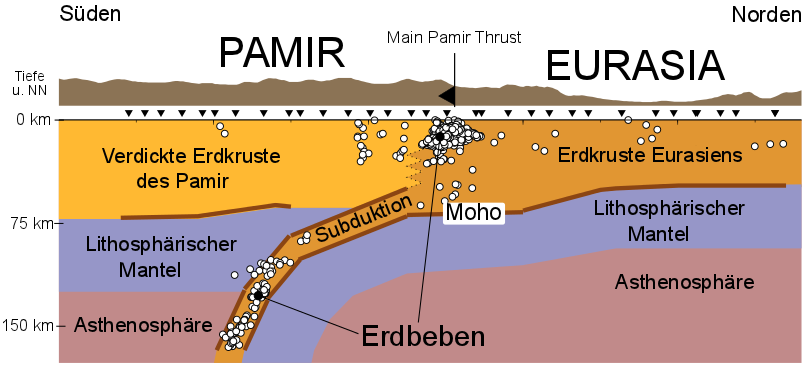
Earthquake damage to buildings is mainly due to the existing shear waves which transfer their energy during an earthquake to the houses. These shear waves are significantly influenced by the underground and the topography of the surrounding area. Detailed knowledge of the landform and the near-surface underground structure is, therefore, an important prerequisite for a local seismic hazard assessment and for the evaluation of the ground-effect, which can strongly modify and increase local ground motion.
As described in the latest issue of Geophysical Journal International, a team of scientists from the GFZ German Research Center for Geosciences could show that it is possible to map complex shear wave velocity structures almost in real time by means of a newly developed tomgraphic approach.
The method is based on ambient seismic noise recordings and analyses. “We use small, hardly noticeable amplitude ground motions as well as anthropogenic ground vibrations,” Marco Pilz, a scientist at GFZ, explains. “With the help of these small signals we can obtain detailed images of the shallow seismic velocity structure.” In particular, images and velocity changes in the underground due to earthquakes and landslides can be obtained in almost real time.
“What is new about our method is the direct calculation of the shear wave velocity. Moreover, we are working on a local, small-scale level — compared to many other studies,” Marco Pilz continues.
This method has already been successfully applied: Many regions of Central Asia are threatened by landslides. Since the shear wave velocity usually drops significantly before a landslide slip this technique offers the chance to monitor changes in landslide prone areas almost in real time.
Further application can be used in earthquake research. The authors were able to map the detailed structure of a section of the Issyk-Ata fault, Kyrgyzstan, which runs along the southern border of the capital city, Bishkek, with a population of approx. 900.000 inhabitants. They showed that close to the surface of the mapped section a splitting into two different small fault branches can be observed. This can influence the pace of expansion or also an eventual halting of the propagation on the main fault.
Central Asia is extensively seismically endangered; the accompanying processes and risks are investigated by the Central-Asian Institute of Applied Geosciences (CAIAG) in Bishkek, a joint institution established by the GFZ and the Kyrgyz government.
Why do these earthquakes occur?
The Pamir and Tien Shan are the result of the crash of two continental plates: the collision of India and Eurasia causes the high mountain ranges. This process is still ongoing today and causes breaking of the Earths crust, of which earthquakes are the consequence.
A second group of GFZ-scientists has investigated together with colleagues from Tajikistan and CAIAG the tectonic process of collision in this region. They were, for the first time, able to image continental crust descending into the Earth’s mantle. In the scientific journal Earth and Planetary Sciences Letters the scientists report that this subduction of continental crust has, to date, never been directly observed. To make their images, the scientists applied a special seismological method (so-called receiver function-analysis) on seismograms that had been collected in a two years long field experiment in the Tien Shan-Pamir-Hindu Kush area. Here, the collision of the Indian and Eurasian plates presents an extreme dimension.
“These extreme conditions cause the Eurasian lower crust to subduct into the Earth’s mantle,” explains Felix Schneider from the GFZ German Research Centre for Geosciences.” Such a subduction can normally be observed during the collision of ocean crust with continental crust, as the ocean floors are heavier than continental rock.”
Findings at the surface of metamorphic rocks that must have arisen from ultra-high pressures deep in the Earth’s mantle also provide evidence for subduction of continental crust in the Pamir region. Furthermore, the question arises, how the occurrence of numerous earthquakes at unusual depths of down to 300 km in the upper mantel can be explained. Through the observation of the subducting part of the Eurasian lower crust, this puzzle could, however, be solved.










